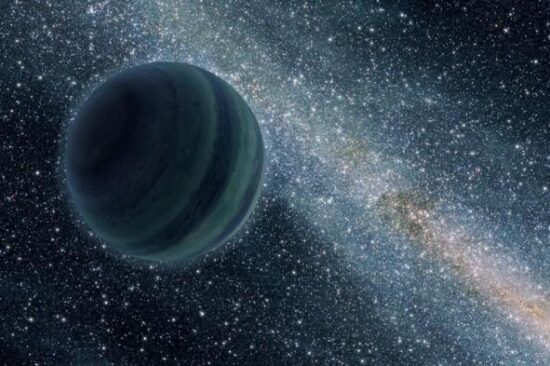I was reminded today of two science fiction novels I read in my teens written by Philip Wylie and Edwin Balmer. They were entitled “When Worlds Collide” and “After Worlds Collide.” Published in the 1930s, their human storylines reflect the political realities of the period and appear dated in characterizations and plotlines. But one of the predictions of the novels has turned out to be spot on. There are rogue planets out there in the Milky Way Galaxy, and although none have been spotted coming our way, their presence adds more complexity to our understanding of the local cosmic realm.
The Milky Way Galaxy according to a recently published paper is filled with planets unattached to stars. Described as sunless, free-floating worlds, astronomers are discovering them as they search the skies by surveying the massive amounts of data collected by Earth-based observatories for the past several decades.
The techniques astronomers have been using to find exoplanets before this latest reveal of rogue planets includes photometric modulation and radial velocity perturbation.
- Photometric modulation involves observing the transit of a potential planet as it orbits a star causing changes to the light intensity we see. A subtle drop in light coming from the star is the first hint that a planet may be circling it. But if the planet’s orbital plane isn’t aligned with our line of sight as it crosses the face of the star this method of detection won’t work.
- That’s where radial velocity comes in. When a planet or planets have sufficient mass, then the centre of mass within that system isn’t the star. Instead, the planets and star orbit a point that could be millions of kilometres away from the star itself. This phenomenon was described when NASA’s New Horizons approached Pluto and its companion moon Charon. Pluto’s moon is just big enough to move the centre of mass to a location approximately 20,000 kilometres (12,000 miles) above the planet’s surface. Similar observations have been made in a number of star systems leading to the discovery of circling planets.
Both techniques have helped astronomers discover thousands of exoplanets. But the new research has led to finding planets with no companion star. The paper published in the journal Nature Astronomy describes what has been discovered and speculates on how these free-floating objects came into existence. So far as many as 170 Jupiter-sized orbs have been found approximately 420 light-years from Earth in an area known as the Upper Scorpius and Ophiuchus.
In the paper, the authors have coined the acronym FFP which stands for free-floating planet. How did they find them?
They used ground-based observations in the optical and infrared spectrum to analyze 80,818 individual wide-field images of the area of the galaxy surveyed. The collection includes images and data collected over 20 years using 18 different cameras and involved studying 26 million observed objects.
Images were combined with data from other catalogues of astrometric and photometric records. Then a computer model was applied to filter out likely FFP candidates. In total, 3,455 high-probability objects were studied yielding a net of between 70 and 170 FFPs. As many as 70% of the FFPs identified were previously unknown.
Prior to this survey, the only way FFPs could be observed was through microlensing surveys that detected an object briefly passing in front of a background star. But microlensing events only happen once so follow-up observations of such an object would be impossible.
The question of how the FFPs originated is still unresolved. There are two hypotheses.
- Could they have formed in a gas cloud that was too small to condense and form a star? Gravity would be sufficient to accrete materials together to create a sub-stellar mass as big as Jupiter or bigger. But it would never ignite the stellar furnace.
- Could they have formed within a solar system where the orbital trajectory brought them too close to a companion planet of sufficient mass to propel them out of the system?
So far the FFPs detected are all Jupiter-sized or larger. But if the second hypothesis is more likely then there should be lots of sub-Jupiter-sized objects out with masses more closely akin to Earth’s. It would take a far smaller gravity assist to propel a small rocky planet mass out of a solar system than a gas giant.
In the Wylie and Balmer novels, the two FFPs, named Bronson Alpha and Beta, are detected several years before their trajectory takes them close to Earth. Both swing around the Sun and one eventually collides with our planet while the other is captured by the Sun’s gravity to settle into an orbit in our solar system’s Goldilock’s Zone. A small number of survivors manage to launch themselves into space to land on this no longer rogue planet to try and establish a new home. The story is more than just the denouement of Earth and the trek to save humanity. With all of the ideological forces in play that were a part of the 1930s, you can imagine the many subplots in this dystopian and apocalyptic tale.
















